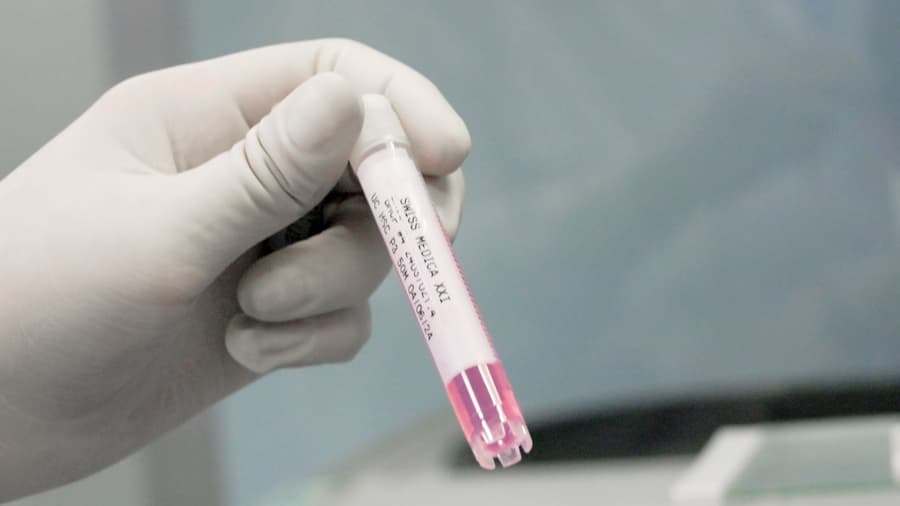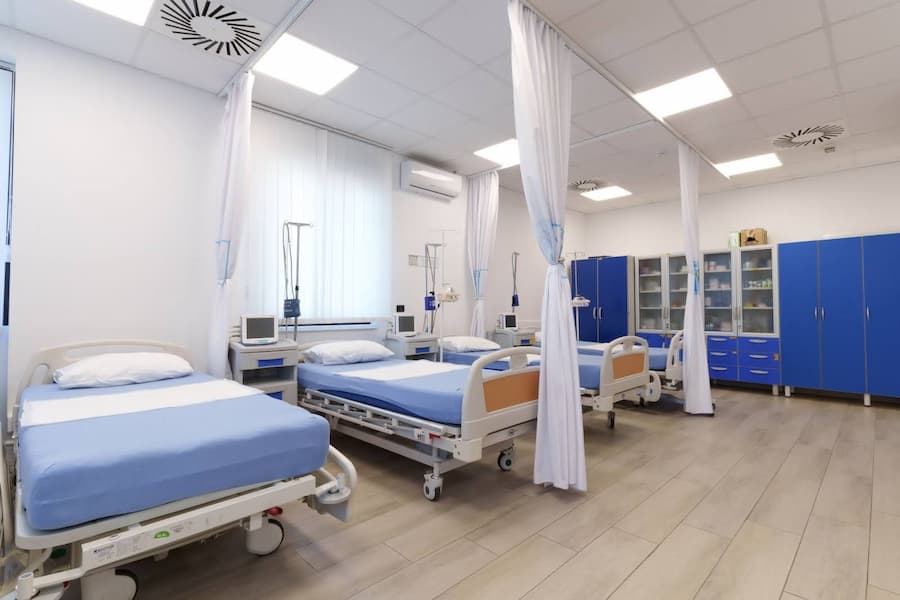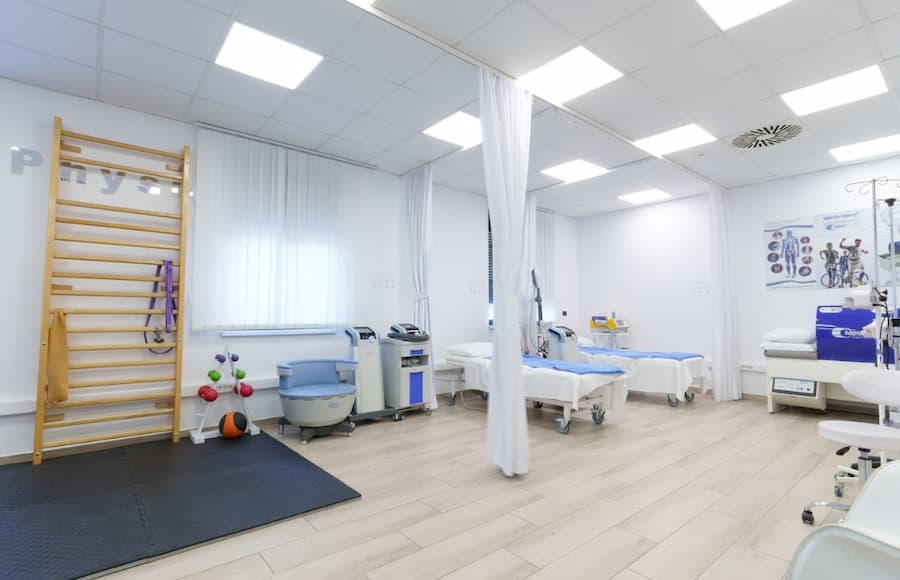Stem cell therapy is at the cutting edge of medical breakthroughs, opening up possibilities for treating different conditions. At the heart of this revolutionary method is a carefully designed process that involves making special cell products and precisely transplanting them into the body.
In this article, we break down each step to give you a clear picture of how the stem cell procedure works.
What Conditions Can Benefit from Stem Cell Transplant?
Scientific studies have demonstrated that stem cells have immunomodulatory properties and can be used to treat a variety of diseases. Since 2011, Swiss Medica has helped over 10,000 patients with various conditions, with 80% of them seeing improvement with our treatment:
- Autism
- Cerebral Palsy
- Injury to CNS (brain, spinal cord)
- Post-Stroke Condition
- Multiple Sclerosis
- Parkinson Disease
- Ataxia
- Dementia / Alzheimer Disease
- Motor Neurone Disease (MND)
- Arthritis / Arthrosis / Osteochondrosis
- COPD
- Chronic Kidney Failure (CKF)
- Diabetes Mellitus
- Lyme Disease
- Liver Cirrhosis
- Erectile Dysfunction, etc.
People who have realistic expectations for the treatment’s results, have a regenerative medicine specialist’s recommendation, and are devoted to following post-care instructions are the best candidates for the stem cell therapy procedure.
Ready to begin your treatment journey with Swiss Medica?
This article provides all the details about our application process.
Who Is Not Suitable for a Stem Cell Transplant?
Stem cell therapy is not a miracle solution or a one-size-fits-all cure. Age, current health status, and disease stage are just a few of the risk factors that can affect a person’s suitability for a stem cell procedure.
These major medical conditions typically have limitations on the use of stem cell therapy:
- Bone marrow cancer,
- Persistent infections,
- Severe anemia,
- Blood disorders.
Based on this, the best way to determine eligibility for stem cell therapy is to consult with a specialized stem cell practitioner who can thoroughly examine the individual’s case.
Get a free online consultation
Start your treatment journey with confidence. Our medical advisors guide you through every step of the stem cell therapy process, ensuring you are fully informed. Fill out the form for a no-obligation consultation.
What Happens Before a Stem Cell Transplantation?
Before beginning cell therapy, the patient gets a thorough medical examination to confirm eligibility for the treatment. Several diagnostic studies assist the doctor in estimating the patient’s health status and determining whether a stem cell treatment procedure is a viable option. If it is, we then determine the dosages that would be both effective and safe to use.
The specific tests required vary for each person, and only doctors can determine the necessary diagnostics on a case-by-case basis. They may include:
| Type of diagnostic | How we proceed |
| Blood tests | Doctors take samples of the patient’s blood to check different parameters such as complete blood count (CBC), blood chemistry, blood type, and to see if there are any diseases like hepatitis, HIV, or CMV. |
| Cardiac evaluation | Patients might undergo tests, such as an EKG or echocardiogram, to assess heart function. These help doctors identify any heart issues that could increase transplant risks. |
| Infectious disease screening | These tests help to make sure the patient doesn’t have any infections that could cause problems during the transplant. |
| Assessment of organ function | Depending on the patient’s medical history, doctors may conduct additional tests to check for issues in the treatment area or assess organ function, including the liver, kidneys, and lungs. |
At Swiss Medica, we may advise against stem cell therapy during testing if we are certain it will have no effect on the patient’s condition. To avoid potential issues, the doctor may prescribe certain medications as part of the standard treatment for the underlying condition.
Meet our doctors and learn more about the preparation for stem cell therapy.
How Do We Create a Cell Product?
Stem cells can come from the patient or a donor. The doctor determines the best option for each case.
Donor Stem Cells
Our experts can suggest using donor (allogeneic) cell products because they are more active, and the patient only needs to come to the clinic once.
It’s the best option when starting treatment promptly is necessary or when using the patient’s own biomaterial isn’t possible due to specific reasons, like anesthesia contraindications, bleeding risks, or severe conditions.
Autologous Stem Cells
In some cases, cells come from the patient (autologous cells). Typically, we can use them immediately after sampling and purification in our own laboratory.
If we need to grow them, it takes approximately 3–4 weeks to produce a cell product from autologous material. Here, the patient has to visit the clinic twice: once to collect the cells and then again for the treatment. There’s no need to be present at the clinic during the preparation time.
Check out our detailed article that breaks down each stage of the production process, helping you understand how stem cell products are made.
Discover now
How Are Cell Products Administered?
The quality of stem cells is our first priority. We conduct multiple safety checks on stem cells and exosomes before and after administration:
-
1
Screen the donor’s materials.
-
2
Check the cells before preparation in the laboratory.
-
3
Ensure a safe and clean environment in the laboratory.
-
4
Monitor and examine cells during cultivation and prior to injection.
Find out how our lab produces superior stem cell products in our dedicated article.
Read nowBefore the stem cell transplant procedure, the medical team shows all relevant laboratory certificates and explains thoroughly the type of cells being used, their source, and the tests conducted to ensure they’re sterile and safe.
The cell administration process is simple, and the procedure doesn’t take long. The method of cell product administration depends on the condition and is determined by the doctor. Here are some of the common methods, though not all:
-
1
Through a drip into a vein (intravenous).
-
2
Injected into a muscle (intramuscular).
-
3
Injected directly into a joint (intra-articular).
-
4
Injected into the fluid around the spinal cord (intrathecal).
More information on the methods we use to administer cells can be found in the dedicated article.
Read moreDoctors typically administer the cells via injections, with no more than two procedures performed in one day. In addition to injections, we offer other treatments using cell products, which may be given differently. For instance, secretome can be administered through inhalation or nasal sprays.
Curious about how secretome works and its benefits?
Dive into our article for all the details.
We advocate for a holistic approach and are committed to the safety and well-being of our patients. Throughout the procedure, the medical staff continuously monitors the patient’s vital signs, including:
- Heart rate,
- Blood pressure,
- Respiratory rate and oxygen,
- Saturation levels.
We are able to accomplish this because our hospital has state-of-the-art infrastructure and facilities that maximize both the quality of care and the results of treatment.
Every procedure is carried out in a special cabinet that meets EU GMP Grade A standards.

After the observation period, the patient can resume their normal life shortly after the cell transplant. We guarantee that you won’t be discharged the day after the procedure—we want to make sure you’re feeling well.
To see how we ensure a comfortable and caring experience for you and your loved ones during your stay, please read this article.
Learn moreIs the Stem Cell Procedure Painful?
Under proper medical supervision and with appropriate pain management techniques, stem cell procedures are generally not painful. The level of discomfort can vary depending on the part of the body being treated, a specific type of procedure, and the individual’s pain tolerance.
During the procedure, the area is usually numbed to make it as comfortable as possible. However, some people may still experience mild discomfort or soreness at the injection site or during the recovery period following the procedure.
Hear from our compassionate nurse committed to providing a smooth and stress-free experience for each patient.
Stem cell procedures are often well-tolerated, even among children. In our experience, we have treated many children with autism, and none of them have reported significant pain.
We employ around 20 different delivery methods to tailor treatments to your needs. Want to learn more about the various stem cell delivery methods we use?
Explore all the details in our articleHow Do We Increase the Effect of Cell Therapy?
To make implanted stem cells work better, we use additional treatments that speed up healing and reduce symptoms. Depending on the condition, we might use therapies like:
- IMR therapy
- Kinesiotherapy
- Manual therapy
- Plasmapheresis
- Hardware physiotherapy
- Individual lessons with a speech therapist and occupational specialist

In contrast to medical drugs, these procedures do not weaken the body’s natural defenses or disrupt metabolic and immune functions. Instead, they help activate the body’s own ability to heal. It is a natural way to get better.
Click on the link to discover which treatments can enhance the effectiveness of the stem cell transplant procedure.
Read nowAre There Any Undesirable Side Effects?
The risk is quite low. Multipotent mesenchymal stromal cells usually don’t trigger the immune system, so rejection is very uncommon, even with donated cells. The most common reaction after getting the cell product is a brief fever, but this is still relatively rare and usually goes away on its own.
For more information on potential side effects, please refer to our article.
Read nowHow Long Does It Take to Recover from a Stem Cell Transplant?
Recovery time from a stem cell therapy procedure varies depending on the type of transplant, but with proper follow-up care, it generally takes only a few days.
When patients return home, our doctors follow up with them for a few months to ensure that their condition is progressing properly. If needed, the therapy can be repeated after a certain period for a better and longer-lasting effect.
When Can You Expect an Improvement?
It may take a few weeks or a couple of months for transplanted cells to fully start working, but you might notice some improvements shortly after receiving them. Depending on the condition treated, these can include less pain, better movement in affected joints, more energy and activity, and improved test results.
The transplanted stem cells stay active for about 3 to 6 months, but the effects they initiate usually continue beyond that period—you may see improvements not only in your symptoms but also in your overall health.
We cannot guarantee that you will feel better by a specific date. The individual’s condition and its stage determine the result.
Interested in understanding the mechanism of stem cell therapy?
Read our article for detailed information on the science behind it.
Contact us
From start to finish, our medical advisors are here to answer any questions you may have about the stem cell transplant procedure. Fill out the form to schedule a free consultation and learn more about the procedure.

Medical Advisor, Swiss Medica doctor
Ready to Explore More?
Discover the full potential of stem cells and dive into additional insightful articles.
List of References
De Miguel MP, Fuentes-Julián S, Blázquez-Martínez A, Pascual CY, Aller MA, Arias J, Arnalich-Montiel F. Immunosuppressive properties of mesenchymal stem cells: advances and applications. Curr Mol Med. 2012 Jun;12(5):574-91. doi.org/10.2174/156652412800619950
Wang, Y., Yi, H. & Song, Y. The safety of MSC therapy over the past 15 years: a meta-analysis. Stem Cell Res Ther 12, 545 (2021). https://doi.org/10.1186/s13287-021-02609-x